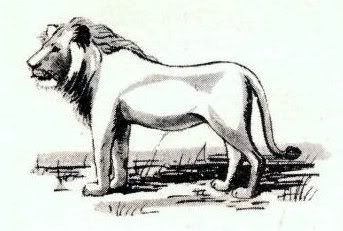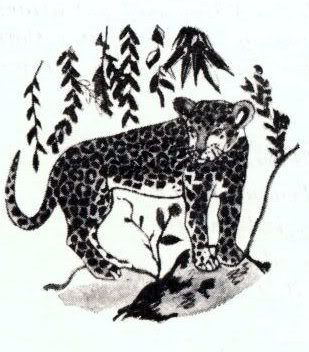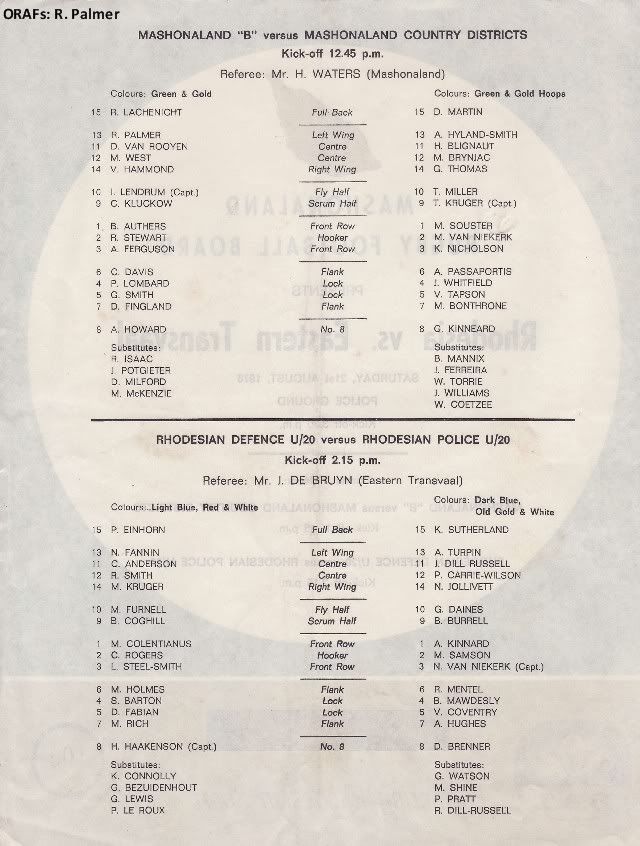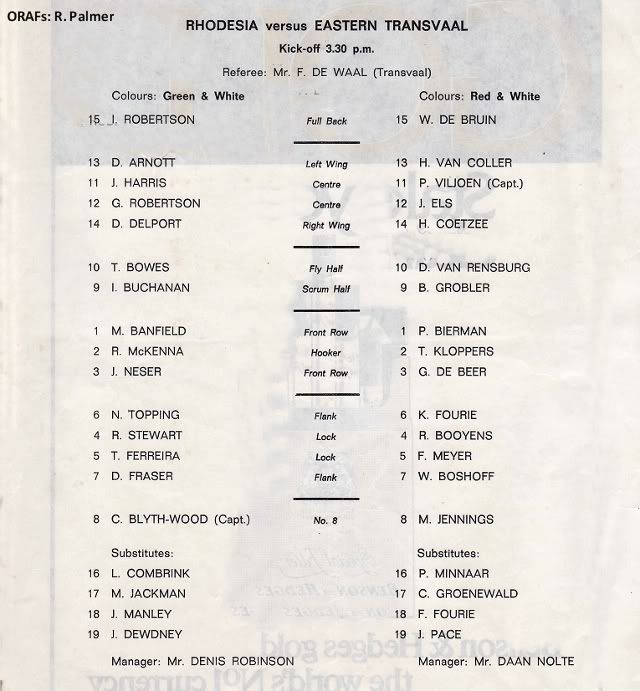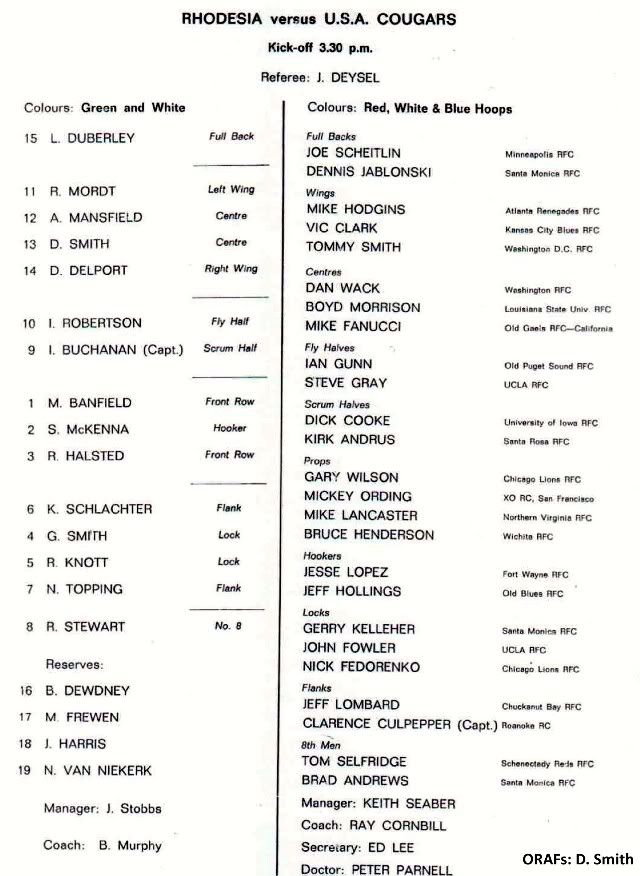Wankie National Park, Southern Rhodesia


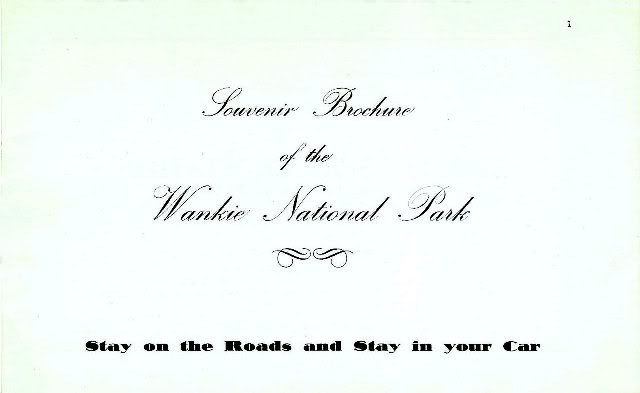
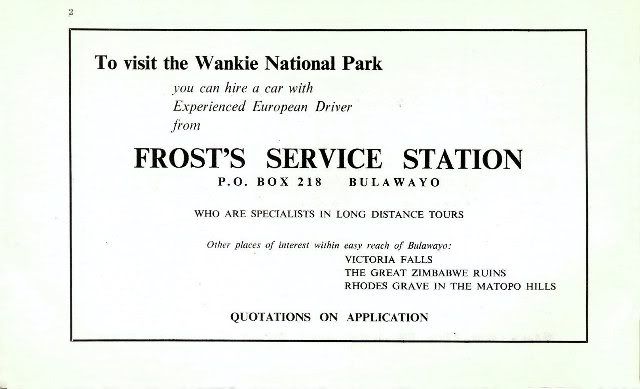
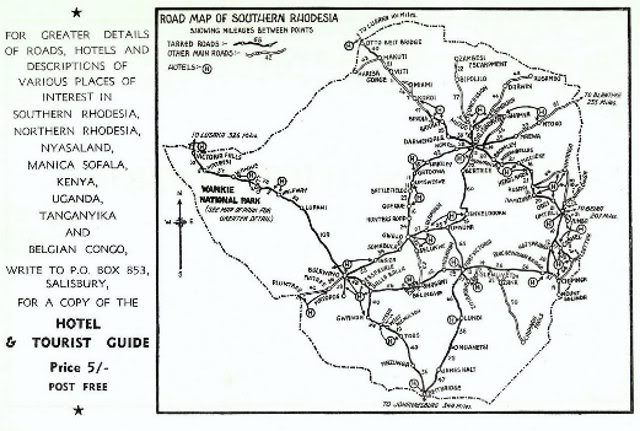
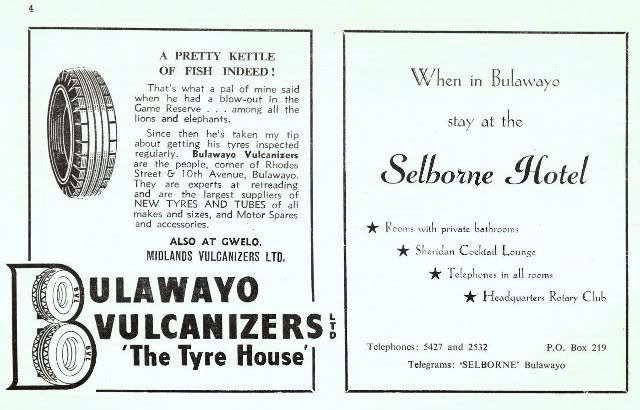
Introduction by the Chief Game Warden of Southern Rhodesia
The Wankie National Park is composed of the Wankie Game Reserve, Robins Game Sanctuary and Guzuma Pan Game Reserve. The primary object of these three reserves is the protection of the natural fauna and flora found in the area and in all matters where the interests of game and tourists clash the former takes precedence.
Considerable funds have been expended on the well being of game, particularly in the provision of water supplies and the management of grazing and browsing. The amount spent on tourist amenities has been limited and only about one-third of the reserve has been opened up with roads and rest camps. These amenities arc in the part of the reserve which carries the greatest concentration of game during the dry months. The period over which these concentrations occur varies from year to year, forming later in the year following a good wet season, and breaking up, when game spreads out into other parts of the vast area, as soon as the rains begin in November of each year.
Towards the end of the dry season, when concentrations are at their highest, particularly after poor rains, the variety of game which can be seen at one time near some of the drinking places cannot be equalled in any other game reserve in Africa. There are, indeed, few places on the continent where such a large variety of big game arc resident in one reserve.
Arrangements have been made to enable a very limited number of visitors to sit up on a platform and watch game coming to drink by moonlight. It is not an uncommon occurrence for a party to see over 200 elephant and 500 buffalo as well as other game in three hours.
Although the number of visitors to the reserve has been kept down to a state where the roads are not overtaxed and the flow of cars did not interfere with game movement, the reserve is rapidly becoming well known and a greater number of intending visitors are seeding information about the park each year.
This brochure will, I feel sure, provide this information in an attractive manner.
E. DAVISON,
Chief Game Warden, Southern Rhodesia.
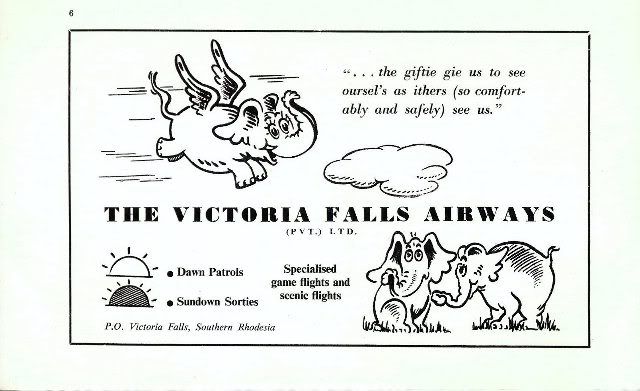
History of Wankie National Park
The Wankie Game Reserve was proclaimed in 1928 and the first game warden, Mr. E. Davison, was appointed in September of that year.
Very little was known of the area at that time beyond the fact that it was a happy hunting ground for ivory and biltong hunters and wandering bushmen. There were no known permanent water supplies in the area proclaimed and game used to move to the Deka and Gwaai rivers for water once the natural pans dried up; both these rivers lay outside the boundaries of the reserve.
The reserve was threatened by an invasion of tsetse fly from across the Gwaai River from 1929 to 1935, during which time no development work was undertaken inside the reserve, but once this threat was removed, by the destruction of game between the reserve boundary and die Gwaai River, development work in the form of the making of artificial water supplies and the construction of roads commenced.
By the generosity of the late H. G. Robins three farms on the bank of the Deka river became part of the Wankie Game Reserve in 1937, but these are still known as " Robins Game Sanctuary." This additional land gave a frontage on to the
Deka river of some eight miles and by the purchase of two other farms the river frontage was extended to some twenty miles. More land has been added to the reserve on the north bank of the Deka, thus giving game access to both banks of the permanent stream. On the Gwaai frontage the reserve was cut off from permanent water by some twenty miles of land which was not game reserve, and to prevent game migrating into this area a line of boreholes and pumps were put down. Until sufficient water has been provided in this way to meet the needs of all the game in this part of the reserve a corridor 25 miles wide giving access to the Gwaai has been left open in order that animals can reach water in drought periods.
About 200 miles of roads and three rest camps have been constructed, and visitors have been allowed into the reserve since 1940. The number has risen from a mere trickle of enthusiasts who were prepared to face sandy roads and primitive accommodation, to over 6,000 visitors a year, spread over the six months when the park is open from June to November. Only about one-third of the total area of the Park has been opened to visitors.
The Wankie Game Reserve and Robins Game Sanctuary attained the status of National Parks in 1949.
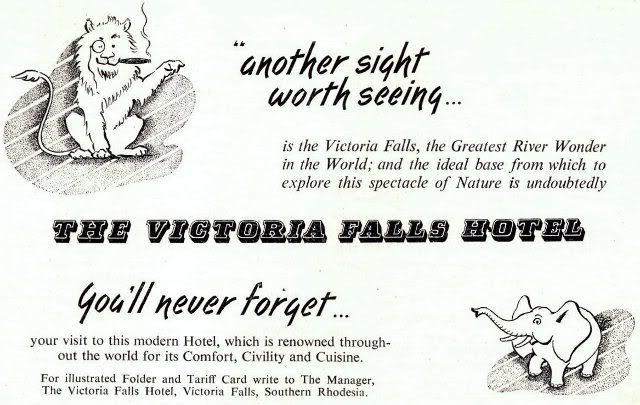
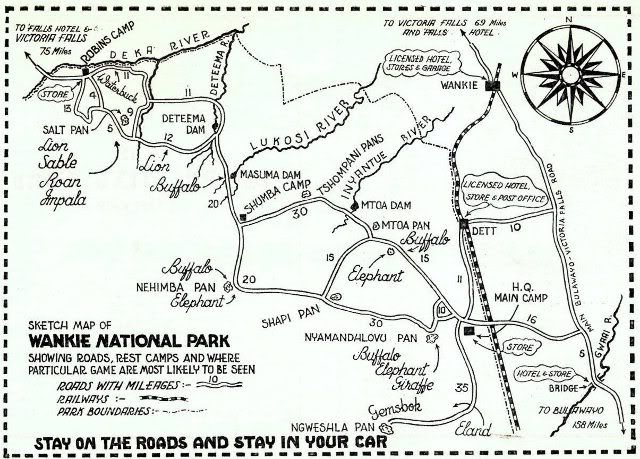
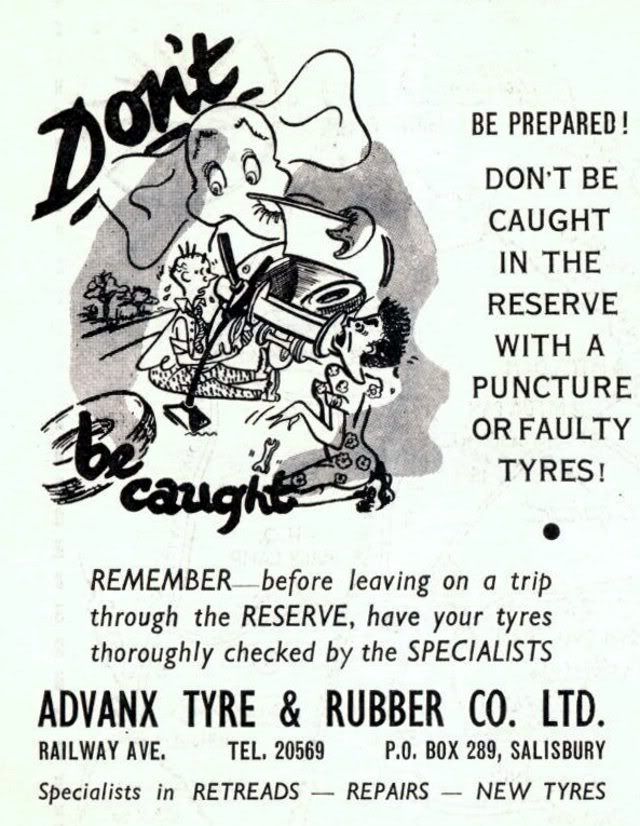

WANKIE NATIONAL PARK
Area and Position
The Wankie National Park is situated in the northwest corner of Southern Rhodesia (see map on page 3). It covers an area of approximately 5,000 square miles, which is gradually being added to by the purchase of adjoining lands.
Access to the Park
Access to the Park is by road only and is gained at three points branching off from the main Bulawayo-Victoria Falls Road (see map on page 9). Tourists from either north or south wishing to visit the Park neednot travel the main road via Wankie, but can make the trip through the Park as a detour. At each of the three points on the main road, the turn-off to the Park is extremely well signposted.
Entrance Fees
The entrance fee is 10s. per car with up to two occupants and 5s. per head for each additional occupant. There is no charge for children under 16 years of age. No additional entrance fee is charged where a visitor is temporarily absent from the Park for a period not exceeding 24 hours, provided he holds booked accommodation during that period. The receipt for the entrance fee is valid for three days from date of issue. Trailers are charged 10s. Season entrance charges are £2 per person over 16 years of age.
Accommodation Charges
(At Headquarters and Robins)
There is no charge for children under three years. First two days in any one place: Adults, 6s. per night each; children under 16. 3s.; for the third and subsequent days, 5s. and 2s. 6d. per night each respectively. At these two camps the foregoing charges include beds, linen, pillows, blankets, hot and cold baths, light and firewood. SHUMBA CAMP.—No charge for children under three years, but all others 2s. 6d. per night. At Shumba Camp there is no bedding or light. Camping charges are 2s. per night per person (including firewood and water); no charge for children under three years. By 1955 there will be huts with beds and light at Main Camp and Robins for non-Europeans.
Due to the limited accommodation available, it is essential that tourists book their accommodation WELL IN ADVANCE. In doing so it is necessary to send a money or postal order for the full amount of the accommodation chargeable for the first night at every rest camp where a stay is intended.
Season
The Park is open to the public from the 1st June to the 30th November. This is the "dry" season in Southern Rhodesia and, with the exception of October and November, the coolest part of the year.
Travelling
Travelling is not allowed inside the Park after dark, so visitors must ensure getting to rest camps well before dark. Travelling is only allowed in closed cars, and not on motor-cycles or open lorries.
Supplies
Petrol is available at Headquarters Camp and Robins. There is a hotel and store at Dett where certain supplies can be obtained. There are also stores at both Main Camp and Robins where a good range of foodstuffs are stocked.
The Rest Camps
At Main Camp there are 28 huts with 60 beds and at Robins Camp 10 huts with 24 beds. The new camp at Robins will be completed this year, bringing the accommodation up to the same as at Main Camp. At Shumba Camp there are only three huts with six beds.
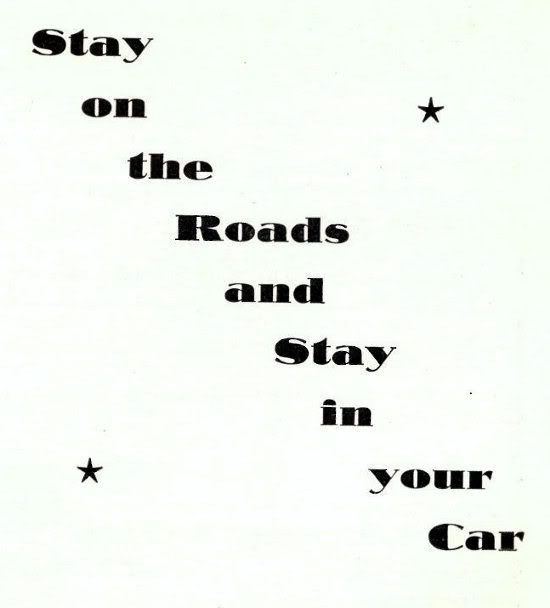
Do's and Don'ts
IT MUST BE EMPHASISED THAT THE ANIMALS IN THE PARK ARE NOT TAME, THE COUNTRY IS STILL RUGGED AND UNINHABITED.
VISITORS ENTER AT THEIR OWN RISK.
EVERY PRECAUTION MUST BE TAKEN NOT TO EXCITE DANGEROUS GAME SUCH AS ELEPHANT OR BUFFALO, AND YOU MUST STAY ON THE ROAD AND STAY IN YOUR CAR.
ALL CARS MUST BE IN THE REST CAMPS BY SUNSET.
Do's and Donts
NO DOGS, HOWEVER SMALL, ARE ALLOWED IN THE PARK.
ALL FIREARMS MUST BE DECLARED, AND MAY HAVE TO BE LEFT WITH THE OFFICER IN CHARGE.
FIREARMS OF SMALLER CALIBRE THAN .25 WILL NOT BE ADMITTED.
VISITORS MAY CAMP WITHIN THE REST CAMP ENCLOSURE, BUT CAMPING OUTSIDE THE ENCLOSURE IS NOT ALLOWED.
VISITORS MUST REPORT TO THE WARDEN IN CHARCE AT THE POINT OF ENTRY BEFORE ENTERING THE PARK AND
DECLARE ANY FIREARMS, GAME OR CAME TROPHIES PETS OR DOMESTIC ANIMALS BEFORE ENTERING THE PARK.
VISITORS MUST ALSO REPORT TO THE WARDEN IN CHARCE AT THE POINT OF EXIT WHEN LEAVING THE PARK.
PERSONS MUST NOT LEAVE THEIR CARS WHILE IN SIGHT OF CAME, AND ARE REQUESTED PLEASE NOT TO SPEED
UP WHEN CAME ATTEMPTS TO CROSS THE ROAD.
SPEED NOT TO EXCEED 25 m.p.h. AT ANY TIME. KEEP TO THE ROADS.
Stay on the Roails and Stay in your Car

Game that can be seen in the Wankie National Park
In order to keep a record of the results obtained by visitors, the Game Warden would be obliged if one member of each party marks on a list provided the numbers of the various animals seen. In the section " Who's who in the Park " you will see drawings which will assist you in identifying any animals you may be in doubt about, together with a description.
The following animals are to be seen in the Wankie National Park:—Bushbuck, Buffalo, Duiker, .Eland, Elephant, Gemsbok, Giraffe, Hartebceste (Cape), Impala, Reedbuck, Rhinoceros, Roan Antelope, Sable Antelope, Klipspringer, Kudu, Steenbuck, Grey-stem buck, Sessaby (Tsessebe), Warthog, Wild Pig, Waterbuck, Wildebeeste, Zebra, Cheetah, Leopard, Lion, Spotted Hyaena, Brown Hyaena, Wild Dog, Jackal, Fox (Bateared) and Crocodile.

LION (Native names: Matabele, isiLwana; Mashona Shumba).—The length of a full-grown lion is about 8ft. 10in. to 9ft. 9in. from the tip of its note, to its tail, the height at shoulder, male up to 44in., female up to 36in., weight 300-500lb., the lioness averaging 25 to 30 per cent, less than the male. Their length of life is from 20 to 30 years. They are gregarious in habit, generally hunting in troops, although they are frequently met with alone or in pairs. As a rule, they will not attack humans, but, when pressed by hunger, there is no limit to their daring. Wounds inflicted by a lion are very poisonous. When the lion has fed he is as indifferent to game as the herds of game themselves are indifferent to him. Their strength is enormous, a full-grown lion being able to drag a bullock over a wall. 'They do most of their hunting by night and spend their days resting and sleeping. Young lions are spotted, but these spots gradually fade with age and disappear by the time it reaches maturity. They do not accompany their parents on hunting expeditions until they are half-grown or even older. A band of lions are referred to as a "pride" A lion will not attack what he cannot see. It is said that the speed of a charging lion is greater than that of any other animal, but is of short duration and probably lasts for not more than a couple of hundred yards.
JACKALS (Native names: Matabele INkanka; Mashona, Gara).—Then are six or more varieties of jackals. The most numerous is the black-backed or silver jackal with a black back and tawny belly during winter and a grizzly white fur during the summer months. Like the hyaena, the jackal is one of nature's scavengers. It is mainly nocturnal and almost omnivorous in its diet, killing small animals and eating carrion.
BUFFALO (Native names: Matabele. and Mashona Nyati).—ln colour it is nearly black, the hair being short and smooth; height at shoulder is nearly 5ft. and it weighs about 1,100lb. The ears lie below the horns, which are very broad, parted in the centre like a thick head of hair, set at right angles to the head, and measure up to 36in. along the curve, with an extreme spread of some 44in. and a depth over the forehead of up to 15in. Both male and female, have horns.
Herds always graze in long lines, their heads turned to the wind, the flanks being guarded by the old bulls. The buffalo is a very dangerous animal and has been known to drive one of its horns clean through a horse's breast and out through the saddle. It will lie in wait for its pursuer or will double back and attack from the rear with great cunning and ferocity, keeping its eyes open until it strikes.
LEOPARD (Native names: Matabele, inGwe; Mashona, iMbaida).—Adult specimens measure as much as 7ft 6in. from the nose to the tip of the tail and weigh about 140lb. When wounded, it is a most dangerous animal. It is very cunning and extremely wary. Its natural food consists of baboons, monkeys, some, of the smaller antelopes, guinea fowl, etc. The colour of the skin, and the markings upon, it vary greatly. It is a difficult animal to hunt as it is so seldom seen in the daytime; it does most of its hunting by night, and they are about the most silent of all the larger hunters. Unlike the lion, they seldom, if ever, eat carrion, tail prefer freshly kilhd food. Domestic animals suffer a great deal from the depredations of leopards, especially dogs, which are such a temptation that a leopard will run almost any risk to try to get hold of one.
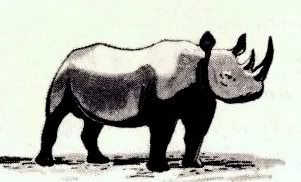
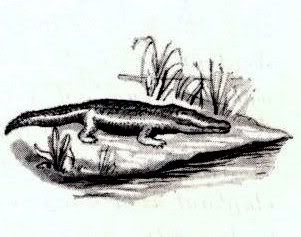
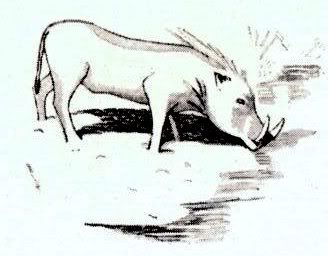

RHINOCEROS (Native names: Matabele, umKomho or Chipemberi; Mashona iShagenya).—The rhino's sense of sight is very limited, probably to about 35yds., and its hearing is not good, but its sense of smell ranks next to that of the elephant and buffalo. When encountered at close quarters in bushy country it is dangerous. The front horn is usually the larger, but not always so. The length of the front horn goes op to 43in. and the rear horn up to 21in.. Although spoken of as horns, they are actually composed of tightly compressed bristles, forming a very hard substance. They are not attached to the skull, but grow out of the skin. These horns have a high commercial value, and are bought by Asian peoples for medicinal purposes. The approximate weight of a full-grown rhino is 3 tons. It sometimes measures 11 ft. from the nose to the base of the tail, nearly 10ft. round the belly and stands over 5ft. at the shoulder. (These notes refer to the Black Rhinoceros; there are no White Rhinoceros in the
Wankie National Park). The rhino browses off bush and, trees.
CROCODILE (Native name: Matabele, Ingwona).—The crocodile probably kills more human beings than any other African animal. It exists in large numbers in most of the rivers of South-Central Africa. Crocodiles are hatched from eggs and are about 9-10in. long, complete miniatures of their parents, and equipped by instinct with the habits of the mature reptile. The most striking thing about these creatures is their jaws. The teeth are not fitted for chewing or biting pieces off the prey, but for seizing and holding it. Tales of crocodiles attacking humans are very common. Strangely enough they are very timid, creatures and the least noise will frighten them away.

WARTHOG (Native mimes: Matabele, inGulube; Mashona iNjiri).—This is a somewhat diminutive specimen of the boar family, with enormous tusks (upper tusk about 11 in. Iong; lower about 5in.). It stands about 26in. in height and weighs about 175lb. At, night they often sleep in ant-bear holes, which they enlarge. This is certainly the ugliest—perhaps the most repulsive in appearance of any living animal. The enormous head has a very broad and flattened snout, with extraordinarily wart-like protuberances along each side, the largest pair of "warts' being just below the eyes. When running they have the peculiar habit of carrying tin tail erect.
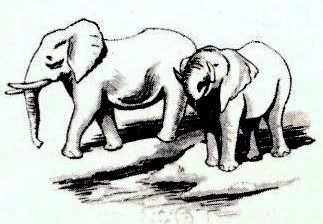
ELEPHANT (Native names: Matabele, inKvubu or inDhlovu, Mashona iNzou). The African elephant differs very considerably from the Indian species, most noticeably so in the ears, which are of enormous size. The ears of the bull, when extended in charging, sometimes measure as much as 15ft, across the forehead from tip to tip. The extreme height of an African elephant is about 12ft. 4in. from the base of the front foot to the top of the shoulders. The hearing and scent of the elephant are most acute, but even on the skyline it is doubtful whether they can detect a man at a greater distance than 50yds. Their life period is uncertain, but in captivity they have been known•to live 120 years. Training of African elephants has been undertaken by the Belgians in the Congo. The elephant is a dangerous animal, especially in the case of a cow accompanied by her calf.
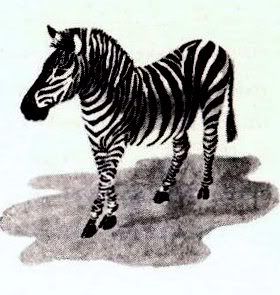
ZEBRA (Native names: Matabele, iDube; Mashona, iMbizi.—The zebra seen in the Wankie National Park is the Burchell's zebra. It stands somewhat higher than other varieties and is more gracefully shaped. The stripes are usually visible right across the belly, the brown - or shadow marks being strongly developed. A herd of zebra always feeds with the heads turned in tin same direction The zebra is capable of being broken to harness, it is immune from horse-sickness and ngana, but has little stamina. Zebras normally live on terms of tolerance with large herds of antelopes, and have,
been found associating with domestic cattle.BUSH PIG or WILD PIG (Native names: Matabele, Inguringundu: Mashona, iNguruvwe).—This animal is about the same size as the wart hog and its habits are similar. They have a cunning and secretive nature.
OSTRICH (Native names : Matabele, inTshe; Mashona, iMou).—The ostrich is the largest bird in Africa. A part from the domestication of these birds in the Cape Province, they are to be found running wild in some parts of the Union and in most parts of Southern Rhodesia. Curiously enough, the wild cock,-ostrich has none of the savage instincts of the domesticated bird. A large ostrich stands about 8ft. high; it attains great speed, raising its wings at the beginning of a run and then holding them dose to its side in order to lessen the resistance to the air.
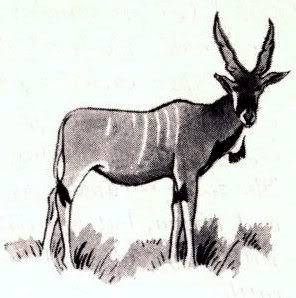
ELAND (Native names: Matabele, impofu; Mashona, Mofu or iShava).—The eland is the largest antelope in Africa, an adult will stand up to 5ft. 6in. to 6ft. high at the shoulder, and weigh anything up to a ton. The horns are massive and average about 30in., those of the cow being more slender than those of the bull. The skin is tawny to fawn, shading to pale grey underneath. There is a thick tuft of dark hair on the forehead and a heavy, bovine dew-lap. The eland is unsuspicious in its habits and has a gentle nature. It can be domesticated.
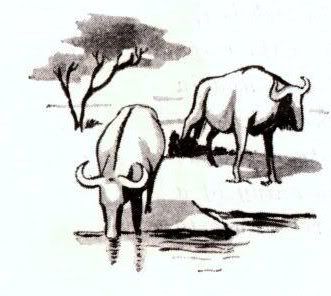

BLUE WILDEBEESTS or BRINDLED GNU (Native names: Matabele, inKonkoni; Mashona, iVumba).—Height about 4ft., length 7½ft.; colour, brown-grey with darker vertical markings, whence the name brindled; the mane is heavy, face and beard black, with white markings on face. Horns 15-25in. long along the curve, spread up to 26in.; basal girth up to 13in., branching like those of an ox and bending inwards. The hind-quarters of the animal closely resemble those of an ill-formed horse, the head being almost grotesquely dispro portioned. The wildebeeste is as speedy as a good horse; it has a long, flowing tail. They usually travel in large herds, and a newcomer to Africa is apt to become frightened when a herd of these animals play their usual trick by charging full speed towards the intruder and then suddenly, 100-200yds. away, stop in line, like a troop of cavalry. They look dangerous, but it is all bluff, and after giving a few loud snorts, they turn round and gallop away as fast as they can. They are comparatively harmless.
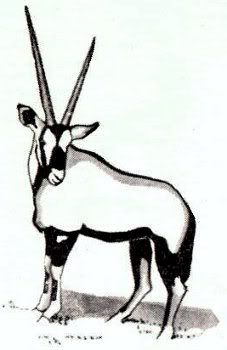
STEENBOK (Native names: Matabele, iNguina; Mashona, iMene).—small, delicately-built animal, standing 18-2Oin. high at the shoulders, with very large ears; it has a reddish-brown coat with white under parts. The ram has very sharp-pointed horns 3-4in. long. It is one of the most beautiful of the antelopes. It is rarely found in herds.
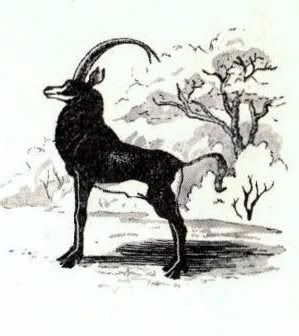
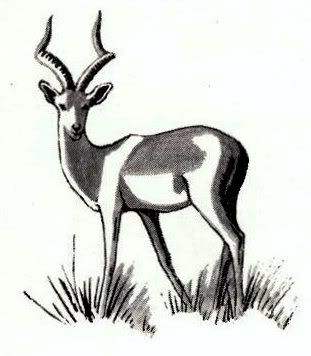
DUIKER (Native names: Matabele, imPunzi; Mashona, iMembhe).—Height from 20-25in., colour varying from pale dull to dark brown; forehead rufous. A very daintily shaped animal with horns from 3ins, up to 5ins..; occasionally the females bear horns. A long tuft of hair carried between the horns sometimes resembles a third horn. There is very little difference in size between the ram and the ewe. Its name. lit. diver, has been gained by its habit of diving suddenly into the thickest bush when alarmed. It usually runs in couples. There are a number of varieties of duiker.
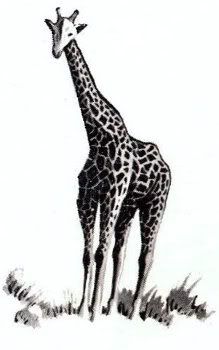

GIRAFFE {Native names: Matabele, inTudhla or inTundhla; Mashona, nSwiza). —The giraffe stands from 17-18ft., measured in a perpendicular line from the head to the ground. large bull may reach an extreme weight of 3,500lb. The colour is bright yellow to almost black, the latter hue being peculiar to very old bulls, It has two short horns covered with skin, a bony protuberance which in- creases with age, until it sometimes resembles a third horn. and a rudimentary pair of horns at the back of its head. Their eyesight is particularly good and it frequents open thorn-bush country. Its enormous size and grotesque proportions render it necessary for the animal to straddle the forelegs widely when drinking. A unique feature of the giraffe is the complete absence of vocal chords, with the result that under no stimulus whatsoever can the animal emit any sound above a snort, grunt or sharp intake of breath. This is remarkable, since other animals with long necks, like the ostrich and camel, are vocal to a degree.

GEMSBOK (Native name: Matabele, Guyama).—This is a very rare animal. Height about 45in., horns up to 3ft. 9in., very straight and fine, deeply annulated next to the base. The female horns are longer and thinner than the bull. In appearance it is a powerful and handsome animal, the body and hindquarters resembling those of a well-bred sturdy cob; colour pale to warm grey; face white, with dark brown markings; belly and lower parts of legs white; black markings on chest (where there is a beard), sides of belly, over rump and on upper parts of legs, and black patches on cannon bone of foreleg. It is probable that this animal was the origin of the unicorn, because the two horns, when seen in profile, appear as one.
BUSH BUCK (Native names: Matabele, Imbayala; Mashona, Goho).—The ram is dark brown, with whitish spots on the haunches; the doe is similarly marked, but is of a lighter colour.. A full-grown bushbuck ram stands nearly 5ft. high,and has a pair of horns having a slight spiral effect 13-15in. long. The bushbuck is a comparatively slow runner, but is dangerous when brought to bay.
STEENBOK (Native names: Matabele, iNguina; Mashona, iMene).—small, delicately-built animal, standing 18-2Oin. high at the shoulders, with very large ears; it has a reddish-brown coat with white under parts. The ram has very sharp-pointed horns 3-4in. long. It is one of the most beautiful of the antelopes. It is rarely found in herds.

SABLE ANTELOPE (Native names: Matabele, umTjwayeli; Mashona. Mara-para).—The sable features in the Southern Rhodesia coat-of-arms and on the reverse side of the florin. It is a most beautiful animal, standing about Aft. 6in. high at the shoulder with a pair of horns, annulated and sweeping backwards through a quarter of a circle and measuring 3-4ft. over the curve. The bull, when in good condition, is jet black, with white under parts and white eye stripes on the face, the neck being surmounted by a bushy mane. Young bulls and cows are a dark chestnut colour, with the same markings as the bull: the horns of the cow are similar in shape, but much smaller than those of the bull. The sable is a noble, handsome animal, and a great fighter when brought to bay.

IMPALA or PALLA (Native names: Matabele and Mashona, Pala).—The impala is the most graceful of all the antelopes. It stands about three feet high at the shoulder and the ram has a fine pair of horns spreading outwards and upwards with a double curvature. The colour on the back is a reddish-brown, which becomes lighter on the flanks, merging into white underparts. On the hind fetlocks a tuft of black hair grows, and each buttock is marked with a half crescent stripe of black, whilst the. tail, which is fairly long, has a black stripe down its entire length. Horns up to 24in.—females hornless—is very speedy and a great jumper, jumping to unbelievable heights; is usually found in large herds; it is noticeable that in these herds the number of females greatly predominate, even as much as twenty to one.

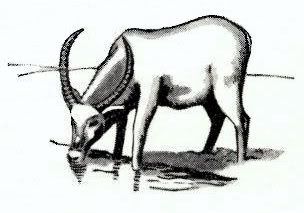
WATERBUCK (Native names : Matabele, isiDumuka ; Mashona, ITumaha).— Stands 4ft. to 4ft. in. at the shoulder. Colour, brown to roan with white bands on either side of rump and white markings; rugged horns, annulated for first two-thirds and measuring from 24in. up to 35in.; body sturdy, well-made; head handsome, is never seen far from water. The bull only has horns, which are very graceful. The flesh of the waterbuck has a most unpleasant flavour.
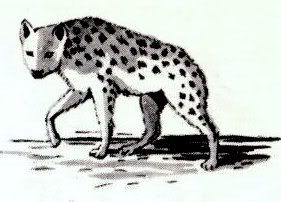
CHEETAH (Native names: Matabele, iSholoshi, Dingwe-Dindingwe).—This animal is often confused with the true leopard. It is never dangerous to man unless wounded. The skin in is beautifully marked with black spots over a red and yellow ground, the belly being almost white. The long tail usually waves about. It is the swiftest of all animals and is said to be capable of well over 50m.p.h. (it has in actual trials shown its superiority over the greyhound); the claws are only partially retractable. Length about 1ft., including the tail (about 30in.); height at shoulder about 32in.
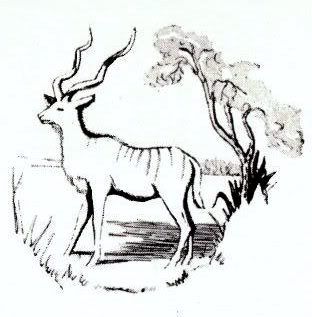
WILD DOG (Native names: Matabele, Maganyani; Mashona, Mumi, Pumi).— They are of irregular and blotchy colouration with black, white and yellow markings, standing some 26in. at the shoulder. Their weight is about 70lb. They are very destructive and will pull down anything from a small buck to an eland, and have, to the full, the disposition of the dog to kill everything within their reach. All classes of game fly from them, so that they are never able to remain long in any locality. It is often referred to as the Cape, or African, hunting dog. They always hunt in packs.
ROAN ANTELOPE (Native names: Matabele, iTaga; Mashona, Marapara).— The roan is a much bigger animal in body than the sable, but it is not nearly so good looking, due to its unattractive sandy coat and comparatively small horns, measuring 30-39in. Its height is about 4ft. 9in. and it weighs about 550lb. The male horns are sharply pointed and annulated and evenly curved. The belly is white; the face black with white markings. It prefers flat country and seldom ascends hills of any height. This animal is rapidly becoming rare.
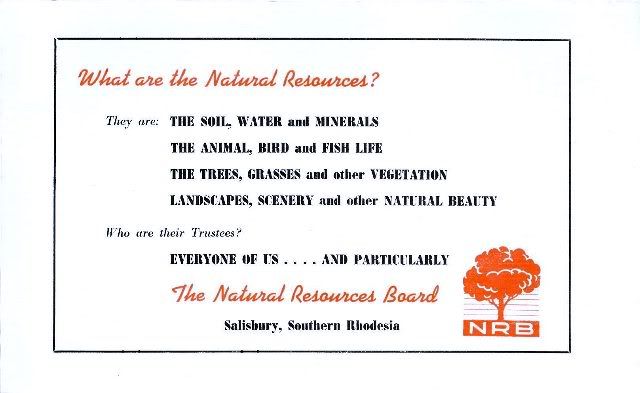
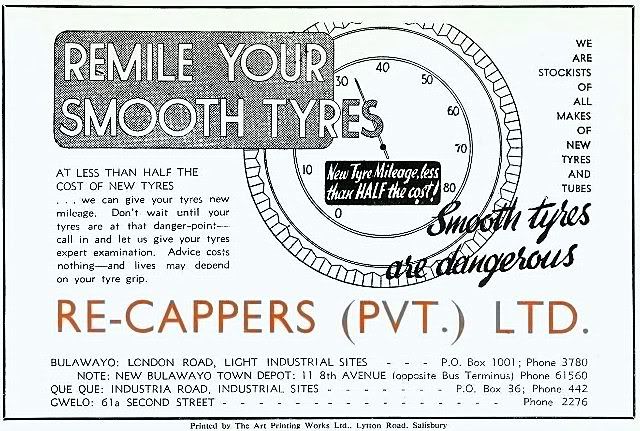
End of Booklet

REEDBUCK (Native names: Matabele, Umzigi; Mashona, Mima).—This is by far the larger of the small buck, standing between 3ft. and 4ft. high at the shoulder, and its colour is fawn, with white underparts. If has a bushy, rabbit- like tail with white underparts, which is always conspicuous as it dashes array in long leaps and bounds. On the approach of danger the animal gives a shrill whistle, which is sometimes continued by the females, which bound forward and stop at intervals, thus giving the alarm to all game in the neighbourhood.
SASSABY or TSESEBE (Native names: Matabele, inKolome or inKomozane; Mashona, iLyundo or iNondo).—The sassaby or bastard hartebeeste is an animal standing nearly 4ft. and 7ft. in length. It weighs about 300lb. It is coloured a deep brown with black markings, horns annulatrd, 12in. up tp 16in. In general appearance it resembles the Cape hartebeeste, but is a faster runner; in fact, the fleetest and most enduring of all the antelopes. The animal is shy and is
able to maintain life at a distance from water.
WATERBUCK (Native names : Matabele, isiDumuka ; Mashona, ITumaha).— Stands 4ft. to 4ft. in. at the shoulder. Colour, brown to roan with white bands on either side of rump and white markings; rugged horns, annulated for first two-thirds and measuring from 24in. up to 35in.; body sturdy, well-made; head handsome, is never seen far from water. The bull only has horns, which are very graceful. The flesh of the waterbuck has a most unpleasant flavour.

HYAENA (Native names: Matabele, iMpisi; Mashona, Bere).—Though of somewhat dog-like appearance, the hyaenas do not belong to the dog tribe. They are, in fact, intermediate between the dogs and cats, though actually included in the latter tribe. The spotted hyaena is the most common of the three species —yellow amber with darker markings. It is a very useful scavenger and has been known to attack sleeping men at night. It is a powerful beast about the size of a large wolf, hunting by night, generally in the wake of a lion or some other animal less cowardly than themselves, whose leavings they are content to divide. It has very powerful jaws and enormous teeth, which enable them to crunch up hones which even the lion cannot tackle.
KLIPSPRlNGER (Native names: Matabele, iGogo, or iGoka; Mashona, Nyoruru).—The klipspringer, or cliff-springer, which may be termed the chamois of Southern Africa, is a small animal with a yellow-tinged, rough-looking coat. It stands about 20-24in high.and, as its name implies, it is a "cliff-dweller" and is to be found in hilly districts, where they may be seen making prodigious leaps amongst the rocks. Like the chamois, it is able to bring four feet very closely together when jumping and it is said that it can easily balance itself on a space no larger than half-a-crown.
CHEETAH (Native names: Matabele, iSholoshi, Dingwe-Dindingwe).—This animal is often confused with the true leopard. It is never dangerous to man unless wounded. The skin in is beautifully marked with black spots over a red and yellow ground, the belly being almost white. The long tail usually waves about. It is the swiftest of all animals and is said to be capable of well over 50m.p.h. (it has in actual trials shown its superiority over the greyhound); the claws are only partially retractable. Length about 1ft., including the tail (about 30in.); height at shoulder about 32in.

KOODOO or KUDU (Native names: Matabele, Balabala ; Mashona, iNoro).— The koodoo is without doubt one of the most handsome or majestic-looking of the greater antelopes. The general colour of both the bull and the cow is a light grey, with a whitish ridge along tin backbone, and from this ridge, uneven, white stripes extend down each flank, whilst a U-shaped white mark is stamped on the face. A full-sized koodoo bull stands about 5ft. high at the shoulder and has a pair of horns measuring anything from 3-4ft. in a straight line. The males, which during the dry season are usually separate from the females, are very shy. They congregate in twos or threes and their senses are very acute. The cows are not so shy.
WILD DOG (Native names: Matabele, Maganyani; Mashona, Mumi, Pumi).— They are of irregular and blotchy colouration with black, white and yellow markings, standing some 26in. at the shoulder. Their weight is about 70lb. They are very destructive and will pull down anything from a small buck to an eland, and have, to the full, the disposition of the dog to kill everything within their reach. All classes of game fly from them, so that they are never able to remain long in any locality. It is often referred to as the Cape, or African, hunting dog. They always hunt in packs.
ROAN ANTELOPE (Native names: Matabele, iTaga; Mashona, Marapara).— The roan is a much bigger animal in body than the sable, but it is not nearly so good looking, due to its unattractive sandy coat and comparatively small horns, measuring 30-39in. Its height is about 4ft. 9in. and it weighs about 550lb. The male horns are sharply pointed and annulated and evenly curved. The belly is white; the face black with white markings. It prefers flat country and seldom ascends hills of any height. This animal is rapidly becoming rare.


Participants in this Booklet
A.C.F. African Consolidated Films Ltd.
Frost's Service Station
Hotel & Tourist Guide
Bulawayo Vulcanizers
Selborne Hotel
The Victoria Falls Airways (Pvt.) Ltd.
The Victoria Falls Hotel
Advanx Tyre & Rubber Co. Lrd.
The Art Printing Works Limited
Gull & Kimpton (Pvt.) Ltd.
Puzey & Diss Motors Ltd.
The Natural Resources Board.
Re-Cappers (Pvt.) Ltd
End of Booklet
Recompiled, by Eddy Norris, from scanned copies of the booklet made available by Diarmid Smith. Thanks Diarmid
Booklet was published in the 1950's
The recompilation was done for no or intended financial gain but rather as a ORAFs initiative to record the memories of Rhodesia.
Thanks to:-
Paul Norris for the ISP sponsorship.
Paul Mroz for the image hosting sponsorship.
Robb Ellis for his assistance.
Should you wish to contact Eddy Norris please mail me on orafs11@gmail.com

